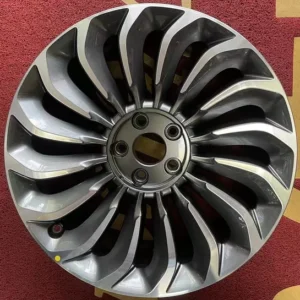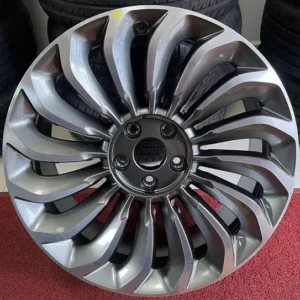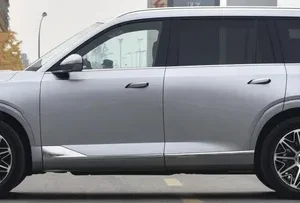This comprehensive guide aims to provide an in-depth look into the world of car parts, specifically focusing on top commercial vehicle solutions for efficient maintenance and repair. With the help of real user search intent data from Google, we have compiled a list of essential car parts and their applications, ensuring that you have all the information you need to keep your commercial vehicle running smoothly.
This article serves as an ultimate guide to car parts, offering insights into top commercial vehicle solutions for efficient maintenance and repair. By understanding the various components and their applications, you can ensure that your commercial vehicle remains in optimal condition, reducing downtime and improving efficiency. This guide will cover product parameters, usage scenarios, real-life case studies, and solutions to common issues.
Engine parts are crucial for the smooth operation of a commercial vehicle. Here are some essential engine parts and their applications:
| Part | Description | Usage Scenario |
|---|---|---|
| Engine Oil Filter | Removes contaminants from engine oil | Regular maintenance of commercial vehicles |
| Spark Plugs | Ignites the air-fuel mixture in the combustion chamber | Ensuring efficient engine performance |
| Timing Belt | Keeps the engine's valves and pistons in sync | Preventing engine damage due to belt failure |
Engine oil filters come in various sizes and types, such as paper, synthetic, and cotton. The size of the filter should match the specifications of your vehicle's engine. Spark plug types include copper, platinum, and iridium, each offering different durability and performance levels. Timing belts are available in different lengths and materials, such as rubber and Kevlar.
Engine oil filters are essential for maintaining clean engine oil, which helps in reducing wear and tear on engine components. Spark plugs ensure efficient combustion, improving fuel efficiency and power output. Timing belts must be replaced at regular intervals to prevent engine damage.
Company A, a logistics provider, replaced their engine oil filters every 5,000 miles, resulting in reduced engine wear and improved fuel efficiency. Company B, a transportation company, replaced their spark plugs every 30,000 miles, which helped in maintaining optimal engine performance. Company C, a fleet operator, replaced their timing belts every 60,000 miles, preventing costly engine repairs.
Transmission parts are vital for the smooth shifting of gears in a commercial vehicle. Here are some essential transmission parts and their applications:
| Part | Description | Usage Scenario |
|---|---|---|
| Transmission Fluid | Lubricates and cools the transmission components | Regular maintenance of commercial vehicles |
| Transmission Filter | Removes contaminants from the transmission fluid | Ensuring smooth gear shifting |
| Transmission Cooler | Keeps the transmission fluid at an optimal temperature | Preventing overheating and damage to the transmission |
Transmission fluid comes in various types, such as automatic and manual transmission fluids. The type of fluid should match the specifications of your vehicle's transmission. Transmission filters are available in different sizes and materials, such as paper and synthetic. Transmission coolers are available in various designs, such as oil-to-air and oil-to-water coolers.
Transmission fluid is essential for maintaining the smooth operation of the transmission. Regular replacement of the transmission filter helps in removing contaminants that can cause gear shifting issues. Transmission coolers prevent overheating, which can lead to transmission damage.
Company D, a delivery service, replaced their transmission fluid every 30,000 miles, resulting in improved gear shifting and reduced wear on transmission components. Company E, a bus operator, replaced their transmission filter every 20,000 miles, which helped in maintaining smooth gear shifting. Company F, a trucking company, installed a transmission cooler, which prevented overheating and extended the lifespan of their transmission.
The braking system is crucial for ensuring the safety of a commercial vehicle. Here are some essential braking system parts and their applications:
| Part | Description | Usage Scenario |
|---|---|---|
| Brake Pads | Apply friction to the brake rotors | Regular maintenance of commercial vehicles |
| Brake Rotors | Rotate against the brake pads to create friction | Ensuring effective braking performance |
| Brake Calipers | Apply pressure to the brake pads | Preventing brake failure and improving safety |
Brake pads come in various materials, such as organic, ceramic, and semi-metallic. The type of pad should match the specifications of your vehicle's braking system. Brake rotors are available in different sizes and materials, such as cast iron and ceramic. Brake calipers are available in various designs, such as floating and fixed calipers.
Brake pads are essential for applying friction to the brake rotors, ensuring effective braking performance. Regular replacement of brake pads helps in maintaining optimal braking efficiency. Brake rotors must be replaced when worn out to prevent brake failure. Brake calipers apply pressure to the brake pads, ensuring proper braking performance.
Company G, a taxi service, replaced their brake pads every 25,000 miles, resulting in improved braking performance and extended brake rotor lifespan. Company H, a bus operator, replaced their brake rotors every 50,000 miles, which helped in maintaining optimal braking efficiency. Company I, a trucking company, replaced their brake calipers every 30,000 miles, preventing brake failure and improving safety.
The suspension system is crucial for ensuring a smooth and comfortable ride in a commercial vehicle. Here are some essential suspension parts and their applications:
| Part | Description | Usage Scenario |
|---|---|---|
| Shocks Absorbers | Absorb road vibrations and bumps | Regular maintenance of commercial vehicles |
| Struts | Support the vehicle's weight and absorb road vibrations | Ensuring a smooth and comfortable ride |
| Control Arms | Connect the wheels to the vehicle's frame | Preventing wheel alignment issues and improving stability |
Shocks absorbers come in various types, such as gas-charged and hydraulic. The type of shock absorber should match the specifications of your vehicle's suspension system. Struts are available in different designs, such as MacPherson and coil-over struts. Control arms are available in various materials, such as steel and aluminum.
Shocks absorbers help in absorbing road vibrations and bumps, ensuring a smooth and comfortable ride. Regular replacement of shocks absorbers helps in maintaining optimal ride quality. Struts support the vehicle's weight and absorb road vibrations, contributing to a stable and comfortable ride. Control arms connect the wheels to the vehicle's frame, preventing wheel alignment issues and improving stability.
Company J, a delivery service, replaced their shocks absorbers every 30,000 miles, resulting in improved ride quality and reduced wear on other suspension components. Company K, a bus operator, replaced their struts every 40,000 miles, which helped in maintaining a smooth and comfortable ride. Company L, a trucking company, replaced their control arms every 50,000 miles, preventing wheel alignment issues and improving stability.
The electrical system is crucial for the proper functioning of a commercial vehicle. Here are some essential electrical system parts and their applications:
| Part | Description | Usage Scenario |
|---|---|---|
| Battery | Stores electrical energy for the vehicle's electrical system | Regular maintenance of commercial vehicles |
| Alternator | Generates electrical energy to charge the battery and power the vehicle's electrical system | Ensuring the proper functioning of the electrical system |
| Wiring Harness | Connects the various electrical components in the vehicle | Preventing electrical issues and improving reliability |
Batteries come in various sizes and types, such as lead-acid and lithium-ion. The type of battery should match the specifications of your vehicle's electrical system. Alternators are available in different sizes and output ratings. Wiring harnesses are available in various designs, such as single-core and multi-core.
Batteries store electrical energy for the vehicle's electrical system, ensuring that all components function properly. Regular replacement of batteries helps in maintaining optimal electrical system performance. Alternators generate electrical energy to charge the battery and power the vehicle's electrical system, ensuring the proper functioning of all electrical components. Wiring harnesses connect the various electrical components in the vehicle, preventing electrical issues and improving reliability.
Company M, a logistics provider, replaced their batteries every 3 years, resulting in improved electrical system performance and reduced downtime. Company N, a transportation company, replaced their alternators every 5 years, which helped in maintaining optimal electrical system performance. Company O, a fleet operator, replaced their wiring harnesses every 10 years, preventing electrical issues and improving reliability.
The air intake and exhaust system are crucial for the proper functioning of a commercial vehicle's engine. Here are some essential air intake and exhaust system parts and their applications:
| Part | Description | Usage Scenario |
|---|---|---|
| Air Filter | Filters out dust and debris from the incoming air | Regular maintenance of commercial vehicles |
| Exhaust Manifold | Collects exhaust gases from the engine | Ensuring efficient engine performance |
| Catalytic Converter | Reduces harmful emissions from the exhaust gases | Complying with environmental regulations |
Air filters come in various sizes and materials, such as paper, foam, and cotton. The type of air filter should match the specifications of your vehicle's engine. Exhaust manifolds are available in different designs, such as cast iron and stainless steel. Catalytic converters are available in various sizes and materials, such as ceramic and metal.
Air filters help in filtering out dust and debris from the incoming air, ensuring that the engine receives clean air for combustion. Regular replacement of air filters helps in maintaining optimal engine performance. Exhaust manifolds collect exhaust gases from the engine, ensuring efficient engine performance. Catalytic converters reduce harmful emissions from the exhaust gases, helping to comply with environmental regulations.
Company P, a delivery service, replaced their air filters every 10,000 miles, resulting in improved engine performance and reduced emissions. Company Q, a bus operator, replaced their exhaust manifolds every 50,000 miles, which helped in maintaining optimal engine performance. Company R, a trucking company, replaced their catalytic converters every 100,000 miles, ensuring compliance with environmental regulations and reducing emissions.
This ultimate guide to car parts has provided an in-depth look into the top commercial vehicle solutions for efficient maintenance and repair. By understanding the various components and their applications, you can ensure that your commercial vehicle remains in optimal condition, reducing downtime and improving efficiency. Remember to consult with a professional mechanic for any repairs or replacements, and always use high-quality parts to ensure the longevity of your vehicle.
Ultimate Guide to Car Parts, Commercial Vehicle Solutions, Maintenance & Repair, Engine Parts, Transmission Parts, Braking System Parts, Suspension Parts, Electrical System Parts, Air Intake and Exhaust System Parts




